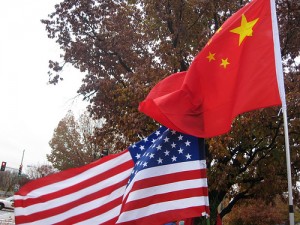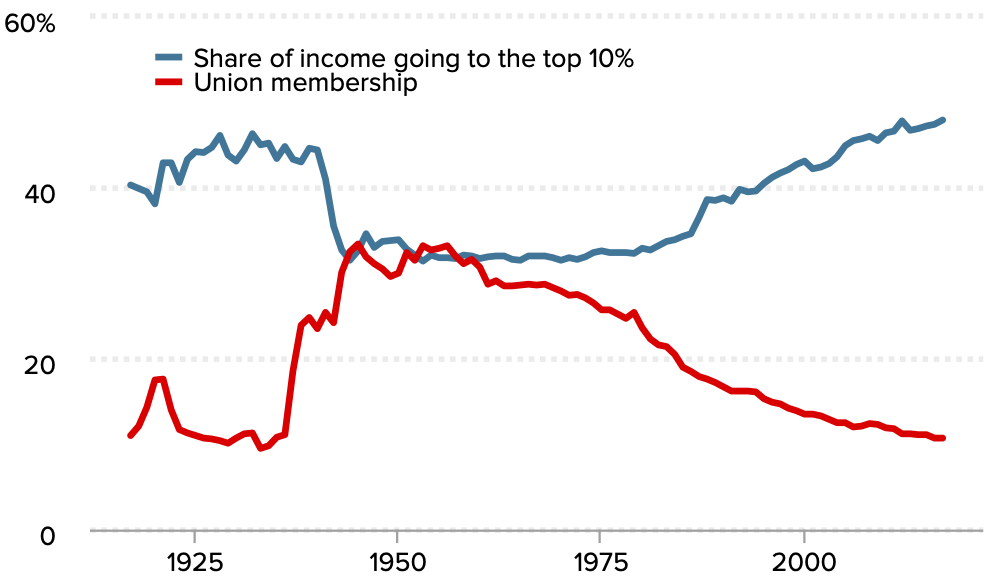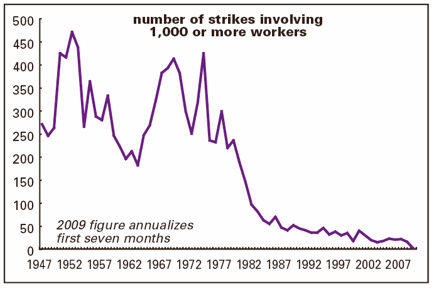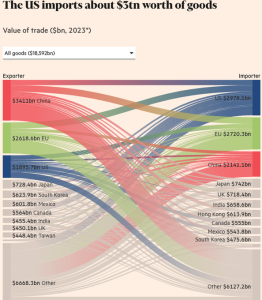
Chinese and American flags flying together
Since the industrial revolution, military power has been largely a function of three factors:
- Technology
- Industrial Capacity
- Population
As time goes by, population becomes less important (see, rise of drones), but it still matters. Think of it as something like Tech x IndCap x (Pop x .5).
The US has a powerful military, though most of the technology is one or two generations old. The general consensus is that Pakistan’s Chinese jets (themselves last-gen tech) out-performed India’s Western jets.
At this point, China is ahead in about 80 percent of tech fields. China has 31 percent of world industrial capacity, and the US about 16 percent, meaning that China has about twice as much. Further, China owns the entire supply chain for many of its technologies, whereas the US’s supply chain is reliant on China.
Finally, of course, China’s share of world industrial capacity is increasing.
A lot of civilian industry can easily be turned into military tech. This is what made the US “the arsenal of democracy” in World War II.
China has about 230x the shipbuilding capacity of the US.
China produces about 20K civilian drones a day. The US produces about 20K civilian drones a year.
The US and Canada combined produce about 12 million cars a year. China produces about 30 million cars a year.
So in a real war, where civilian industry is retooled for military production, well, China is well ahead. In the case of drones and ships, ludicrously ahead.
The US finds itself in a similar position to Japan on the eve of the Pacific War. Japan had a powerful fleet and air force, but it couldn’t replace equipment losses to match the rate of the US, let alone expand its arsenal. If it isn’t a “short victorious war,” the US loses, unless it goes nuclear, in which case everyone loses.
This imbalance is only going to get worse. China has a ridiculously small army of about two million, with a million paramilitary. When you consider its population of 1.4 billion, well, again, China is similar to the US before WW2; an industrial behemoth with an undersize military, but which can be expected to ramp up — fast.
(These numbers are better if one includes South Korea and Japan, or even the EU, but then one has to add Russia to the Chinese side. And the way the US is acting, it’s less and less clear its allies will support it in a shooting war, especially if it starts the war. Never thought I’d say that about Japan, but Trump has really shit the bed with his insane trade war.)
All of this is going to get worse and worse for the US. China is increasing its tech and industrial lead, while the US is systematically de-funding its research sector even as erratic economic policy makes long-term investment in new industrial capacity difficult. China’s civilian airline industry is taking off, its car industry is expanding as the West’s collapse, and it’s the only real player in the drone space.
China doesn’t want a war for the simple reason that the longer they put one off, the easier it will be if it happens — and the less likely it will be to happen, because Americans will be unable to sustain the delusion that they have any chance of winning said war.
The American era is over. It’s even likely that the US will lose control of South America, which it has had since the late 19th century. (Yes, there were theoretically independent nations in South America. Theoretically.) It will be pushed back to its North American stronghold, where it even seems to be attempting to lose effective control of Mexico and Canada, which is an entirely self-inflicted wound, as both nations wanted to stay under the US wing.
Just as the sun set on the British Empire, today it is at the horizon for America, and the long European supremacy is nearly over. The world returns to its normal state, where the Middle Kingdom is the most important and prosperous country in the world.

 A healthy person can survive forty to sixty days without food, depending on how fat they were to begin with. Women last longer than men (women are better at all extreme endurance feats I am aware of).
A healthy person can survive forty to sixty days without food, depending on how fat they were to begin with. Women last longer than men (women are better at all extreme endurance feats I am aware of).





 Well, maybe. Who the hell knows what he’ll do. Anyway, tariffs are back to 30% on China and 10% on America.
Well, maybe. Who the hell knows what he’ll do. Anyway, tariffs are back to 30% on China and 10% on America.